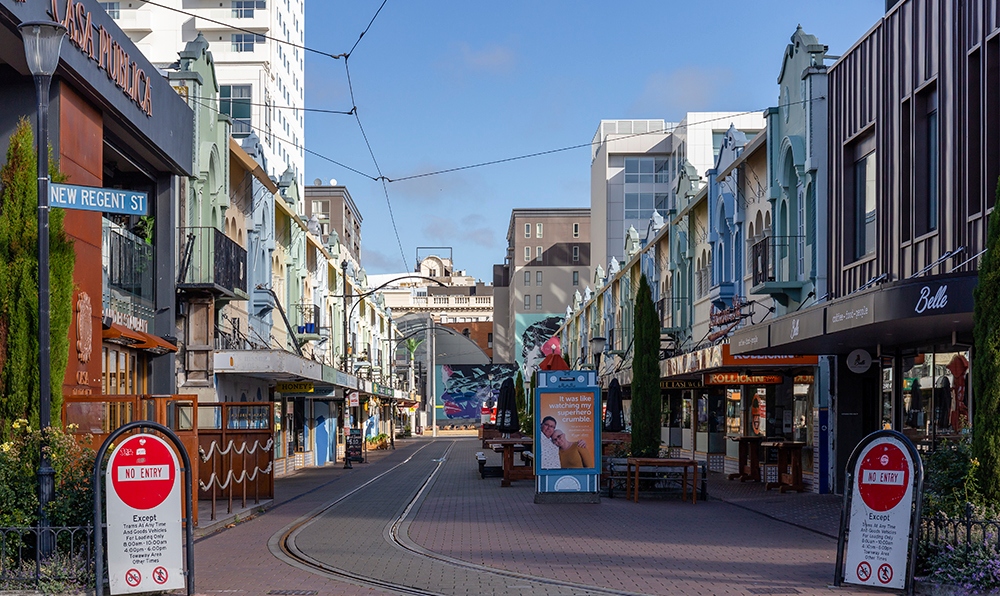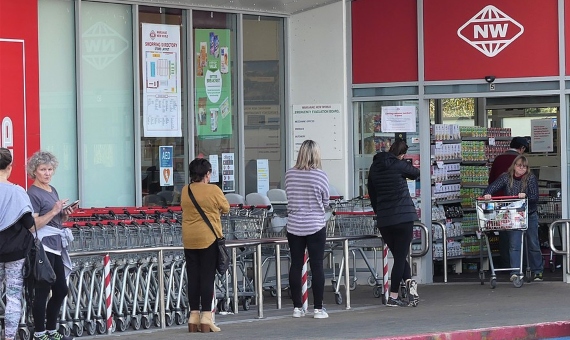This article, published in August 2020, has been updated with information added in October 2021
As the SARS-CoV-2 coronavirus pandemic continues to advance unabated across the globe, it has become apparent that not all countries have achieved similar results so far, even though most have eventually resorted to strategies based on lockdowns and stay-at-home orders. But few have achieved success comparable to that of New Zealand; larger than the United Kingdom, but with only five million inhabitants, its COVID-19 numbers are the envy of the world. At the time of writing, there are a total of 1,569 confirmed and probable infections, with only 22 deaths, and the country is now 100 days without a locally transmitted case of the virus. How have they achieved this? And above all, would it be possible to export its model to other countries?

Unlike other nations, which hesitated in their initial response and reacted only when it was too late, New Zealand responded quickly and decisively. On 3 February, the first restrictions on foreign visitors from China were introduced. The first case of coronavirus in the country was recorded more than three weeks later, on 28 February, the same day that entry was closed to travellers from Iran; in fact, the first person infected came from there. On 19 March, the borders were closed except for residents and citizens, who had to be quarantined upon their return to the country.
Two days later, a four-level alert system was introduced, starting at level 2, but rising to level 3 on the 23rd and to the maximum of 4 on the 25th, the mandatory nationwide lockdown. A month later, and in view of the apparent containment of the epidemic – the figures dropped only ten days after the lockdown was imposed – the alert level was lowered to 3 on April 27, to 2 on May 13 and to 1 on June 8, eliminating all restrictions except the border closure, which remains in force today. On 1 May, 65 days after the entry of the first infected person into the country, the virus was considered to have been eliminated with the last case of community transmission detected so far.
Go early and go hard
In summary, New Zealand’s response may not seem too different from that of many other countries that have increased and then relaxed their restrictions in line with the evolution of the epidemic. But while in other nations the goal has been to flatten the contagion curve, New Zealand’s Prime Minister Jacinda Ardern soon abandoned this goal and replaced it with “elimination of the virus.” Strict lockdowns were imposed when only 102 cases and no deaths had been recorded. Other countries locked down their populations at about the same time, but by then they had hundreds or thousands of deaths and uncontrolled, though still underestimated, local transmission.

However, the plan to “go early and go hard” against the virus was not the only likely factor in the Kiwi success; the responsibility of the citizenry was also judged to be exemplary. According to an analysis published on 12 April on the blog of Nick Wilson, an epidemiologist and public health expert at the University of Otago, the mobility of New Zealanders was reduced almost instantaneously by 73%, with certain activities collapsing by 90%. At the same time, a major effort was undertaken to test the population, and on 20 May the NZ COVID Tracer app was launched, based on placing a QR code at the entrance of any relevant facility that users should scan, so that their tracks and possible contacts can be traced in the event they contract the virus.
Competent and skilled leader
But beyond these factors, analysts highlight another aspect that has contributed to the containment of the coronavirus. In a previous report that profiled the safest places to take refuge from a pandemic, Wilson told OpenMind that one of the requirements for dealing with such crises with some hope of success is “having competent and skilled leaders – New Zealand has benefited from the leadership of Jacinda Ardern.” And the truth is that, while in other countries citizens have tended to polarise towards extreme positions in favour or against the management of their governments, both in New Zealand and beyond its borders much praise has been lavished on the Prime Minister’s efforts to maintain transparent and effective communication and to adopt measures based on scientific evidence following the advice of her technical advisory committee.

Central to this has been the participation of epidemiologist Michael Baker, also from the University of Otago and a member of the technical advisory committee. A driving force behind the idea of eliminating the virus, Baker believes that other countries have overlooked the fact that the incubation period of SARS-CoV-2, which doubles that of other viruses such as influenza, offers an opportunity to quickly identify sick people and promptly isolate their contacts before they in turn have time to develop the disease and infect others, thereby breaking the chains of transmission. The epidemiologist highlighted this factor as one of the keys to the country’s virus elimination strategy.
Despite all this, the New Zealand response has not been unanimously lauded either. At the opposite end of the spectrum, Sweden’s Chief Epidemiologist, Andres Tegnell, has held the view that the pandemic is a marathon, not a sprint, and therefore the measures must be sustainable over the long term. New Zealand, with its borders shut for nearly five months, is losing its main source of foreign exchange, tourism, which employs one in eight New Zealanders. Even analysts within the country regard the economic cost of the restrictive virus elimination strategy as being too high to be viable and that a restructuring of the economy will be needed.
The fear of possible “COVID fatigue”
Finally, there is disagreement about whether virus elimination is even possible in other nations. Some experts consider that the New Zealand model is not easily applicable to other countries, as an island nation with a low population density already has an advantageous ‘head start’. Baker counters that this has been a minor factor and that the NZ model is exportable. But in a 2019 study, before the current pandemic, Wilson predicted that New Zealand and other large island countries, such as Australia and Iceland, would be the safest refuges in the event of a pandemic. In particular, Australia, the big neighbour, has also achieved remarkable success against the virus, although the subsequent uncontrolled spread in the state of Victoria has forced a strict lockdown.

The worrying situation in Victoria has also alarmed New Zealand authorities, who fear that possible “COVID fatigue” among the citizenry could lead to dangerous outbreaks. The Guardian noted that the QR codes are already little more than decorative elements ignored by the majority, that less than 13% of the population has downloaded the app, and that the people of New Zealand have lowered their guard, believing that the coronavirus is now just a bad memory. In contrast, authorities warn that the question of the resurgence of the virus “is a matter of when, not if.”
In a recent article in The Conversation, Baker spoke of the possibility of “allowing incremental increases in international travel,” but restricted to other virus-free territories. Whether it will be possible for New Zealand to maintain its bubble for the foreseeable period of time that this pandemic could last, or whether the country will be able to maintain its impeccable record while increasing its degree of openness, only time will tell.As Rosalind Eggo, an expert in infectious disease modelling at the London School of Hygiene & Tropical Medicine, told Nature, “finding the balance between what actually is a strategy that people will tolerate, and what strategy will contain an outbreak, is really important.”
UPDATE: October 2021
New Zealand’s strategy, in retrospect
The five deaths in the last 12 months bring the total number of fatalities from COVID-19 in New Zealand to 27 since the start of the pandemic, a figure the rest of the world looks at in awe, as well as the total of just over 4,400 confirmed or suspected infections to date. But while other nations may envy these glowing records, the hard road this island nation has had to travel to achieve them is another matter altogether.
Under the leadership of Prime Minister Jacinda Ardern, and with epidemiologist Michael Baker as the main architect, New Zealand has persevered in its strategy of eliminating the SARS-CoV-2 coronavirus, maintaining strict control of its borders and allowing its citizens to live practically normal lives without restrictions, except for episodes of strict lockdown when a new case emerges.

However, the spread of the delta variant of the virus has called the New Zealand model into question. In June 2021, the first case of this variant of the virus was detected in New Zealand in a visitor from Sydney. Then, in August, the first community transmission of this variant was reported in Auckland, prompting Ardern to order an Alert Level 4, a national lockdown. The Auckland cluster has now reached over 1,200 cases and there are concerns about both its rapid growth and the detection of chains of infection with no clear origin. The mandated lockdown in the city was criticised by some British commentators, and some public health experts have even questioned the elimination strategy.
Faced with the new problem of a cluster that has not yet been brought under control, and with the city of Auckland still under lockdown, the Ardern government decided in early October to reverse its policy. According to the prime minister, the elimination strategy will take a back seat to the need to increase vaccination rates, which remain low, and a three-phase roadmap has been drawn up to enable Auckland to progressively move out of lockdown even if the outbreak has not been eliminated.
Prior to this movie, the Ardern government had already signalled its intention to allow a cautious and progressive relaxation of border controls; by early 2022, it plans to allow vaccinated citizens from low-risk countries to enter the country without quarantine, although those from medium- or high-risk areas will have to be placed in isolation. The prime minister has already warned that “the border will never be the same again after COVID.”
Time will tell whether the tweaks to New Zealand’s pandemic policy succeed in controlling new outbreaks, and whether the new approach continues to enjoy public confidence. Prior to the latest announcements, polls still showed strong support among New Zealanders for their government’s approach, with 78% approving of the measures taken and 59% rating the government’s performance as “excellent”. In a recent Ipsos global survey, New Zealand was ranked as the fourth best country for health crisis management. And while there is a degree of internal dissent, the debate has not yet taken on the political edge that it has in other parts of the world.
Comments on this publication